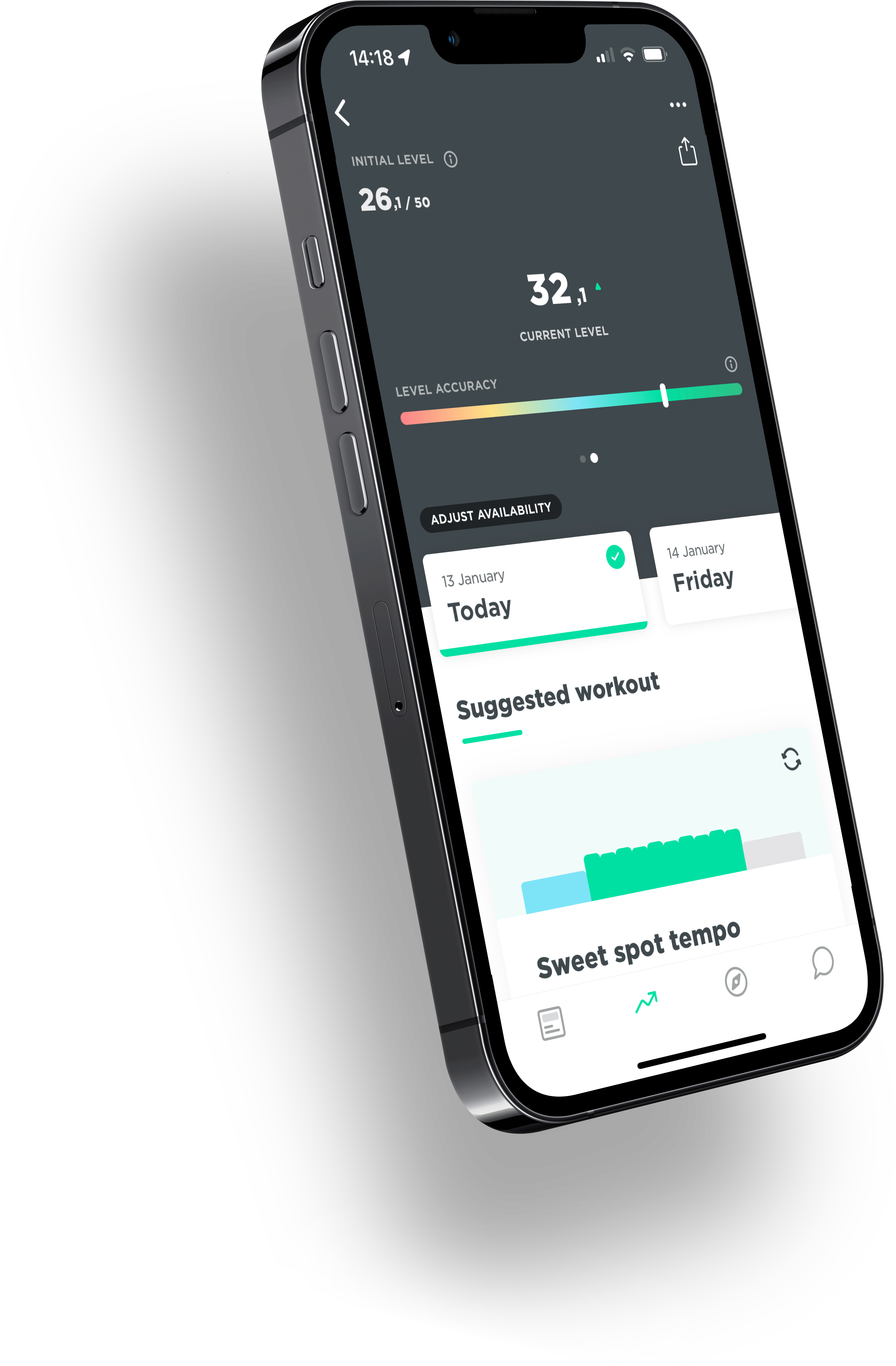Power:
Definition: Power is a physical quantity of energy per unit of time. The unit of power is Watt or joules per second.
Explanation: It’s the most valid and reliable way to measure your performance. It’s the direct energy output that you provide. In addition, it is also the best way to determine the intensity of a training exercise on your body. But don’t just look at the power number, never forget to listen to your body and how you feel before, during and after a workout.
Normalized power:
Definition: Average power based on an algorithm that takes into account the fact that you do not provide constant power (the average power) while cycling.
Explanation: Normalized power is calculated by averaging the variation in power over various time intervals. The average power of an interval training would be lower because of the rest you take in between the intervals. The normalized power takes this variation in the intervals into account. This makes it a more accurate way to determine the intensity of a training session. A ride with a lot of variation (intervals or height difference) with the same average power as a constant workout is harder on the body and would be reflected by a higher normalized power number.
Intensity Factor (Intensity factor, IF):
Definition: The intensity factor is a measure of the average intensity of a workout.
Explanation: The intensity factor is obtained by dividing the normalized power (NP) by the FTP (Functional Threshold Power). The result gives an indication of the hardness of the workout. This means that a ride at your FTP gives an IF of 1.00. The IF is a simple indication of the intensity of the workout and can prevent you from training too monotonously. Try to avoid always coming home with the same IF.
Training Stress Score (TSS):
Definition: A score to determine the stress that a workout puts on the body, which is based on the intensity (intensity factor, IF) and the duration of a ride.
Explanation: The heavier and longer a ride, the higher the TSS will be. For example: a ride of one hour at your FTP will lead to a TSS of 100. A very quiet endurance training (IF of 0.50) of two hours can therefore result in the same TSS. This implies that you should not only look at the TSS, but also at other indicators (IF, NP and duration). The same TSS does not imply the same training effect!
Kcal (kilocalorie):
Definition: A unit for energy, just like Joule.
Explanation: Calories is actually an old expression, but it is still widely used in the food industry. One calorie equals 4.18 KJ. The mechanical efficiency during cycling is about 20%. That means that you need to produce five times as much energy from food to keep on cycling. With this knowledge it is possible to calculate exactly how much energy you need based on your power data (power is after all joules per second).
FTP:
Definition: Functional Threshold Power (FTP) is the maximum power you can just sustain for one hour.
Explanation: The FTP is determined through an exercise test in a lab. You can also do a DIY field test to get a fairly good indication of it (20 minutes test). After a field test, you should take the average power value that you got after going all out for 20 minutes and take 5% off to have a good estimate of your FTP. Physiologically speaking, the FTP corresponds with the point where the production and consumption of lactate are in balance. When the intensity is higher than the FTP, you won’t be able to maintain it for very long, because not all the lactate can be burned any more. Your legs will notice. An intensity just below or at the FTP-level can be maintained much longer. The FTP can be expressed in both absolute power (Watt) and relative power (Watt/kg) by taking a person’s body weight into the equation. That latter, relative power is especially important when pointing your bike up mountain roads.
Training zones:
Definition: A distribution based on power and/or heart rate to determine the degree of intensity.
Explanation: Power and heart rate zones are based on your FTP or your threshold heart rate. The reason why training zones are used is to determine and evaluate the intensity of a workout in order to achieve the intended training effect. Because it is actually impossible to keep your power or heart rate constant, training sessions are based on zones.
ERG mode:
Definition: A setting where the smart-trainer controls your power by adjusting the resistance to your cadence.
Explanation: The ERG mode is ideal for carrying out specific training sessions. In this mode the bike ascertains that you are pushing the desired power (e.g. a certain percentage of your FTP). If you keep can your cadence constant, the indoor bicycle trainer will do the rest!


